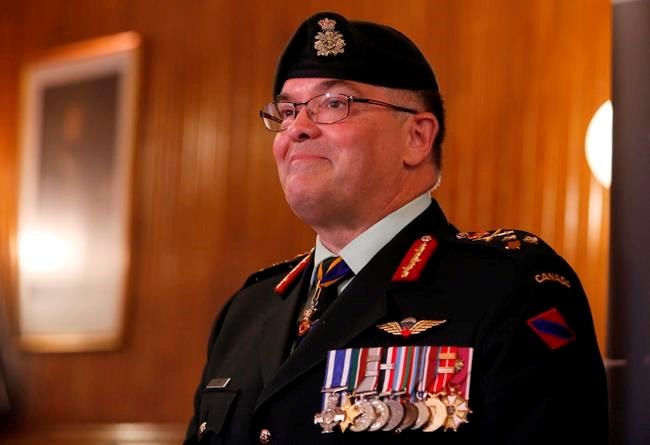OTTAWA — The war in Ukraine has identified critical gaps in the Canadian Army's ability to fight and survive on the battlefield, leading to an unanticipated rush to buy new military equipment.
In an interview with The Canadian Press, Canadian Army commander Lt.-Gen. Joe Paul said that includes anti-tank and anti-aircraft missiles as well as systems to protect against drones.
The Army is also hoping to purchase the types of long-range, precision missile systems that have given Ukrainian forces a distinct advantage over their Russian foes, and state-of-the-art command-and-control technology.
"These are the capabilities that are making a difference right now in Ukraine," Paul said. "We have paid a lot of attention to that right now."
The new weapon systems the Army is hurrying to purchase were not included in the Liberal government's defence policy when it was released five years ago.
But Paul said the Canadian Armed Forces has studied the fighting in Ukraine since Russia invaded in February, launching Europe's largest war in generations.
As a result, the Army has identified deficiencies in its equipment, including the need for weapons to defend against traditional threats like tanks and aircraft — and new threats such as drones.
"I'm moving forward on these three programs to satisfy my really immediate needs," Paul said.
Not all of the gaps are a complete surprise. For example, the Army has repeatedly warned that it needs weapons and other defences to protect Canadian troops from air attack. But while there have been plans to buy a new system for years, little has happened.
There is now a sense of urgency, particularly as the Army prepares to send hundreds more soldiers to Latvia to shore up a Canadian-led NATO battle group designed to help protect eastern Europe in the event of a broader war with Russia.
While details on the planned reinforcement are still up for discussion, Canada has committed to acquiring and deploying anti-tank weapons, counter-drone and air defence systems, ammunition and explosives as part of that effort.
Paul indicated the Army is looking to buy portable anti-aircraft missiles as a first step toward addressing the broader need to protect against air attack, while working on a more comprehensive system over the medium term.
"There's a few ticket items out there that maybe I'm going to be telling myself and the rest of my team: 'OK, we have something off the shelf right now. It's not optimal, but it's good enough,'" he said.
The war in Ukraine has also revealed the advantage of long-range missile systems that are capable of striking with precision, Paul said. The U.S. has donated such weapons to the Ukrainian military and they have proved decisive on the battlefield.
The Canadian Army currently relies on M777 howitzers for artillery support, which provide about 30-40 kilometres of worth of coverage.
"Range does matter," Paul said. "The nature of warfare is evolving. So we need to be in a position where a battle group and a brigade, their area of influence is more like around 100 to 125 kilometres."
The evolving nature of war has also underscored the need for commanders to have a better idea of what is happening on the battlefield and the ability to issue commands and control units in real time. That will involve AI and other advanced computing.
"You need hundreds of sensors and you need to be able to take the data and process the data quickly," Paul said. "You need to leverage the machine."
At the same time, the Army commander said one real challenge in obtaining the equipment is that many of Canada's allies have come to the same conclusions about what they need and are moving to buy the same stuff.
"We're looking at the options, we're looking at what's available," he said. "Keeping in mind that all the western democracies are right now knocking at the same companies' door to try to procure these same weapon systems."
This report by The Canadian Press was first published Dec. 29, 2022.
Lee Berthiaume, The Canadian Press



